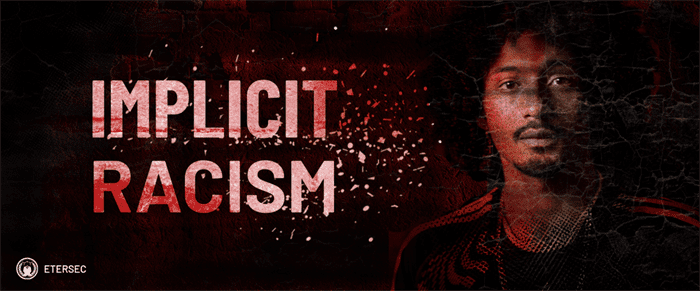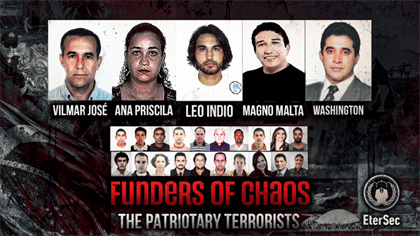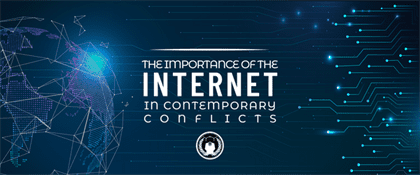Implicit Racism
For a long time, what legitimized the slave system was economics. When Africans were subjected as business assets, British ports became centers of the slave trade, as many Englishmen began trading with governors in regions such as Sierra Leone and Bunce. The slaves who roamed the lucrative trade in the Atlantic were considered rootless people, that is, they were socially dead (in a kind of bare life, stripped of civil or social rights, on the margins of the law, landless, abandoned of their rights).
Therefore naked lives were subjected in the power relationship with the masters. Despite this, there was still a zone of tension between the masters and their slaves, because the slaves could invade and attack at any time; such a zone of tension led to make brutalities against these people a natural thing, a way to repress revolt, to cause fear through the spectacle of punishment. It is not just about death, but about torture, or a punitive spectacle. There are reports by the Dominican monk Bartolomeu de Las Casas of scenes of face mutilation of black people.
At the same time that such atrocities were occurring, there were writings and debates among lawyers, philosophers, anthropologists, biologists, and writers, in general, about whether blacks could be considered human beings or close to animals. Such discussion had its outset in the notes taken by Columbus when he came across very dark-skinned people on his voyage to Sierra Leone, something totally different from what was preached by classical and medieval narratives. From there, multiple discussions on the subject unfolded, including Locke (and the possible crossbreeding between humans and chimpanzees), Shakespeare (and the representation of Caliban) and others.
If this were not enough, at the height of mercantilism (or the first instant of capitalism), slave ownership was taken as a symbol of wealth and purchasing power, the exploitation of profit through these differences. It was through the profit from slavery that many cities and businesses leveraged their growth, as for example the city of Bristol. If on the one hand the Crown profited from labor in the commercialization work of the colony, it also profited from the slave trade (a double capture for the production of capital).
It is by analyzing these points that we observe the emergence of a conglomerate of social, legal, scientific (or academic), and economic structures that converge to create power relations between whites and blacks. We call this conglomerate a power device (as the French philosopher Michel Foucault named it, the set of knowledges, discourses, knowledge, and institutional mechanisms as a means of subjectivation, in this case: of production of a certain monstrous and inferior subject, the black, or also the native).
After the abolition of slavery, the south of EUA still refused to treat blacks as equals, but it was necessary to follow the law. There were presidents who said they would no longer interfere in the south, causing many southern governors to create new laws, such as the Jim Crow Law (a character created by Thomas Rice, in which Black facing was practiced), a law that required different facilities for whites and blacks; the laws were enforced between 1877 and 1964.
The question to be answered is: how does this whole brutal and complex power device persist until today, even after so much "evolution," after so many studies and laws about racism? How is structural racism, or implicit racism, able to take root in people's behavior and in the structures of social relations, being reproduced even mechanically?
With the prohibition of overt discrimination, there was the false impression of the end of racism, something that never occurred, because it only took on a new form. Implicit racism can also be called structural or modern racism, it is a form of unconscious discrimination, a practice that most of the time is done and is not perceived. In this form of racism the direct discriminatory practice is masked, but there is the prejudiced feeling internally, which manifests itself most of the time when the prejudiced person is stressed, angry, under alcohol ingestion, and in other cases in which total conscious control is lost. In summary, implicit racism is present in people who act outwardly without apparent prejudice, but have internally prejudiced attitudes, even unconsciously.
According to Elliot Aronson in Social Psychology, "when we say that someone is prejudiced against blacks, we mean that he is primed to behave coldly or hostilely toward them, and that he regards them all as practically the same. The characteristics he or she attributes to blacks are negative and apply to the group as a whole. Individual traits or behaviors of the target of prejudice will go unnoticed or be disregarded. This predisposition of racism is made up of three components:
1. stereotypes, the cognitive component
Stereotyping is the generalization of a social group, where various characteristics are attributed to all members, without distinguishing their actual variation. The human cognitive process that defines stereotypes works through what is called illusory correlation. According to the Psychology Says website, illusory correlation is "what leads us to establish relationships between two variables that are either not so strongly related, or directly unrelated."
2. Emotions, the affective component
This is the component that exerts great activity in intolerant or reactionary groups, and is also prominent in implicit racism, which is often unconscious. The affective component is related to deep-seated negative feelings. This is the main aspect that makes it so difficult to argue with prejudiced people, rational and logical arguments are not effective in confronting emotions, even when the person is aware that his prejudice may be wrong.
As Gordon Allport has well observed, "defeated intellectually, prejudice endures emotionally."
3. Discrimination,the behavioral component
Discrimination occurs when there is a harmful and/or unjustified negative action towards an individual or social group, just for being part of it. In a society with a culture rooted in the beauty standard of thin people, for example, fat people are often the targets of jokes and discrimination, and are even less likely to be hired or promoted when compared to slender people(Finkelstein,DeMuth,and Sweeney,2007). This case of prejudice is what also occurs on a large scale in implicit racism.
Since in our society stereotypical attributions are abundant and there is an extremely high rate of discriminatory behaviour, the vast majority of people tend to develop prejudiced attitudes to some extent; this is institutional discrimination, which includes racism and institutionalized sexism.
Prejudice is often learned in childhood, through parents and grandparents, but structural racism can also be a cause of the big social failure that exists in this country. Also in Social Psychology,"If you have grown up in a society where few members of minority groups and woman have careers (usually in inferior jobs, you are more likely to develop some negative attitudes toward the inherent ability of these groups. This will happen without anyone having to teach you directly that they are inferior, and without some law or decree forbidding them to attend universities, boardrooms, or medical schools. Instead, social barriers will create a lack of opportunity for these groups.
The large number os stereotypes and prejudices developed, especially racism, cause unpleasant effects on the victims, among the main ones being the lowering of the target's self-esteem,with the internalization of society's view that she or he would be inferior, unattractive, or incompetent; and self-fulfiling prophecies, which are the case in which the victim acts according to people's expectations of what she or he is like.
As well exemplified by Suzana Dutra Del Monte:
"Examples of self-fulfiling prophecies are when parents often say around their child that "he's terrible","he's just like his father". The prophecy stigmatizes an individual based on one of their behaviors and the belief becomes that this is how it will always be in every situation, which is noy true, because our behavior is different for every bond or situation. However, if I start my relationship with a child already believing him to be "terrible" as they said, my attitudes with this individual may make him act according to my expectation.
A fact that unfortunately occurs in a large number of victims of discrimination and prejudice and for this reason, we cannot stop fighting against this practice.
The fight against racism is constant, every day thousands of people face it,when leaving home, at work, in public transport and in hundred of other places, they are constantly judged by the color of their skin, this is not current struggle, an example is Rosa Parks, an American who fought for black civil rights in the city of Montgomery at the time, was where one of the biggest racial conflicts in the United States was talking place, where the Jim Crow laws,mentioned above, had been institued.An example of the execution of this law would be Rosa's case, the whites had a great advantage on buses, since only they could occupy the first seats. Rosa was coming home from work, got on a bus and sat down, just like other blacks, as the whites got on, and stood up, the driver asked them to stand up to give up their seat, they stood up, but she did something that no one expected, Rosa refused to stand up and remained seated, with all that situation, the police were called and they took her to jail for breaking the segregation law of the city. She was released the next day thanks to NAACP President Edgar Nixon and his friend Clifford Durr, who posted her bail. Her arrest caused a great commotion, causing black workers and sympathizers to walk for miles in protest, causing great loss to transportation companies. The protest lasted about 382 days and only ended on November 13, 1956, after the law was annulled by the Supreme Court. Even the movement had the support of people very well known today, such as Martin Luther King and Mahalia Jackson, a gospel singer.
As we have seen, even providing the prejudiced individual themselves with the knowledge that they are stereotyping another group and committing an immoral act does not solve the issue, and often people even fortify their discriminatory beliefs. With this problem, after much research by social psychologists to find a way to reduce the level of prejudice, the contact theory was developed. It has proven effective in many situations, especially in early childhood education, which is one of the roots from which the treatment of these acts must begin.
In order to reduce prejudice between two groups, the contact hypothesis relies on the following conditions: mutual interdependence, a common goal, common status, informal contact between people, multiple contacts, and social norms of equality. Its performance tested in a children's classroom showed as a result improved self-esteem, performance, increased empathy, and friendly relations between the groups.
There is hope! Fight with us in this cause!
"It is never too late to abandon our prejudices. No way of thinking or acting can be blindly trusted, no matter how old it may be. What everyone today repeats or silently accepts as truth tomorrow may prove false, mere haze of opinion that some take as a rain cloud that would fertilize their fields."
- Henry David Thoreau




